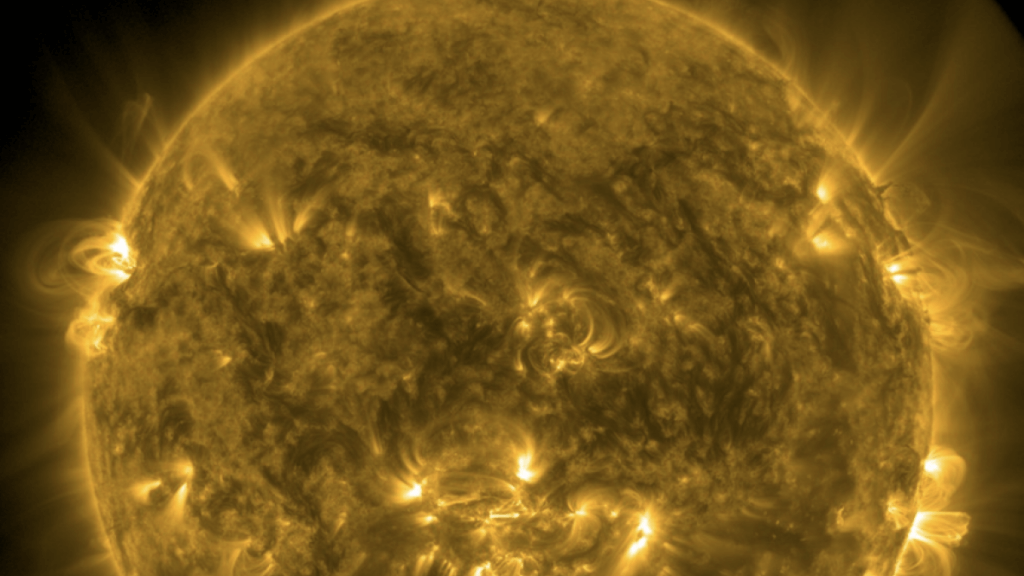
The sun is teeming with intense activity, NASA footage shows (Image Credit: Mashable)
Fortunately, this solar activity is normal, but nevertheless spectacular. The NASA Solar Dynamics Observatory (SDO) — which has been in space investigating the sun since 2010 — captured robust explosions and ejections from the sun’s surface over the last week.
Similar to storm seasons or climate patterns on Earth, the sun experiences a cycle of weather, which lasts for 11 years. During the solar cycle, activity increases for some 5.5 years, then decreases, then picks up again.
“It’s the space equivalent of hurricane season. We’re coming into another one,” Mark Miesch, a scientist with the National Oceanic and Atmospheric Administration’s Space Weather Prediction Center, told Mashable earlier in 2023.
In this current cycle, solar activity will peak around July 2025. That’s why you’re seeing these fireworks below. The activity includes seven solar flares (explosions of light from the sun’s surface) and 18 coronal mass ejections (when the sun ejects super hot gas, called plasma, from its surface).
The SDO spacecraft captures vivid images of the sun every 10 seconds. You’re seeing impressive detail. “Every image is eight times the resolution of HD video,” NASA explains.
How the sun’s activity impacts Earth
Earth’s atmosphere, thankfully, shields our bodies from the impacts of solar flares and related activity. This includes things like X-rays and energetic particles emitted from the sun. Meanwhile, Earth’s potent magnetic field (generated by Earth’s metallic core) deflects many particles from solar storms and protects us from the sun’s relentless solar wind, a continuous flow of particles (electrons and protons) from our star.
Yet future solar storms pose a great risk to our electrical grid and communications infrastructure. That’s why spacecraft like SDO and the Parker Solar Probe are vigilantly observing the sun, allowing us to better understand, predict, and prepare for powerful flares or coronal mass ejections. (To avoid mass grid damage from an incoming solar storm, we can, for instance, temporarily shut off grid power and make sure hospitals are prepared to run on generators.)
“It’s not something to lose sleep about, but it’s something to take seriously.”
Infamously, a potent CME in 1989 knocked out power to millions in Québec, Canada. The CME hit Earth’s magnetic field on March 12 of that year, and then, wrote NASA astronomer Sten Odenwald, “Just after 2:44 a.m. on March 13, the currents found a weakness in the electrical power grid of Quebec. In less than two minutes, the entire Quebec power grid lost power. During the 12-hour blackout that followed, millions of people suddenly found themselves in dark office buildings and underground pedestrian tunnels, and in stalled elevators.”

Credit: NASA / SDO
Want more science and tech news delivered straight to your inbox? Sign up for Mashable’s Light Speed newsletter today.
Most of the flares that hit Earth are harmless and result in the glorious Aurora Borealis, or Northern Lights, caused by solar particles heating up molecules in our atmosphere. Inevitably, a potent flare will someday impact Earth, but the goal is to anticipate the impacts.
“It’s not something to lose sleep about, but it’s something to take seriously,” emphasized Miesch.
Topics
NASA





